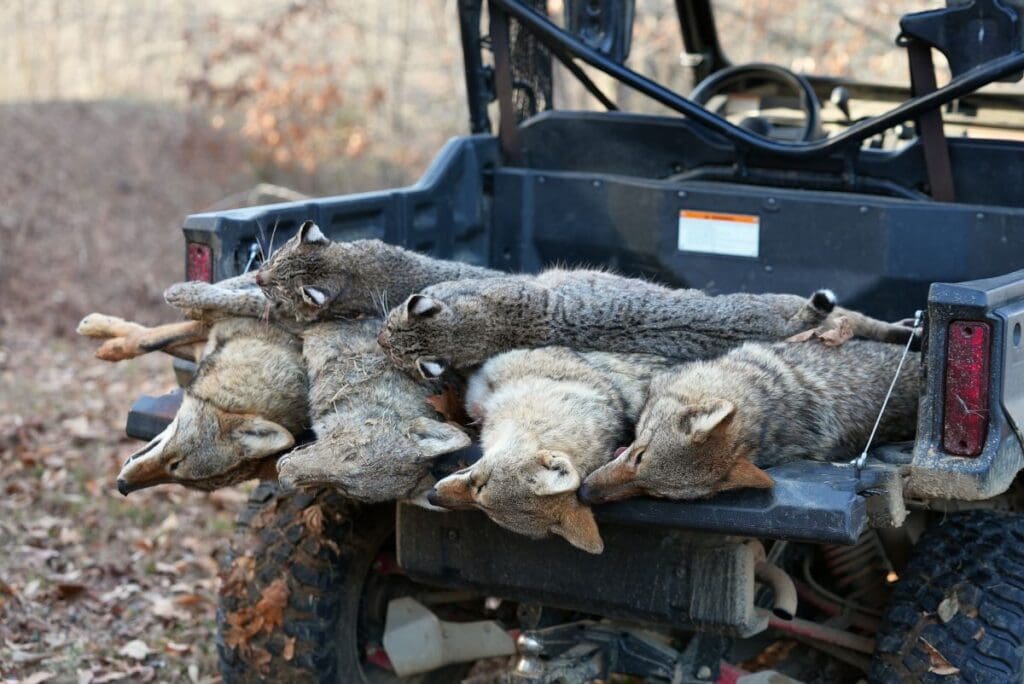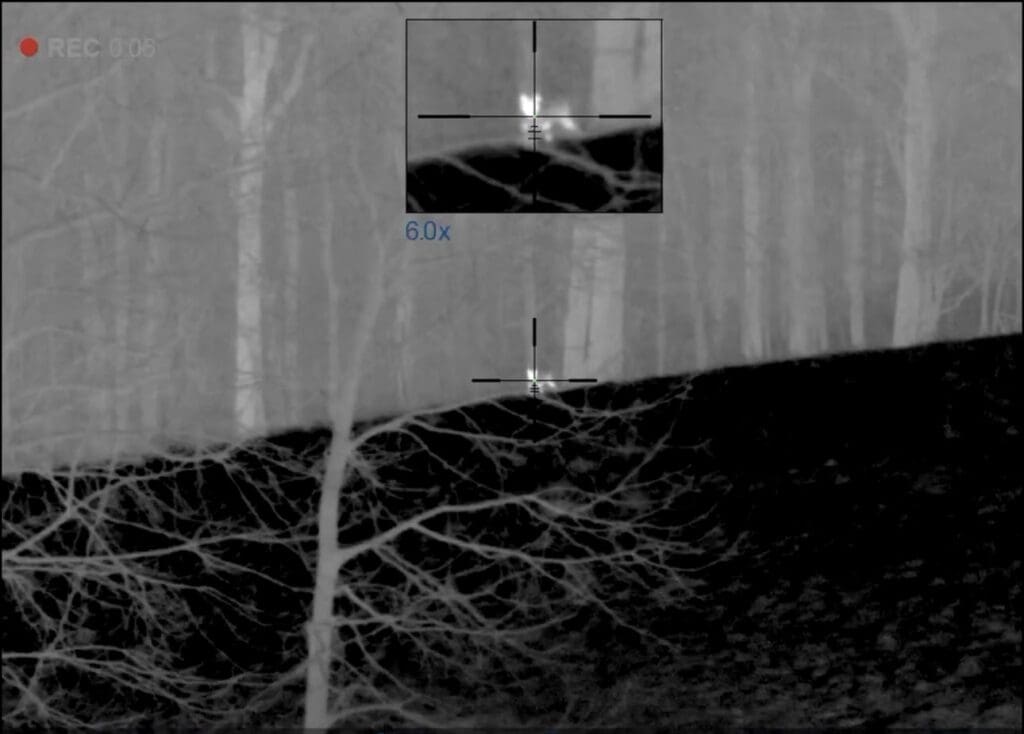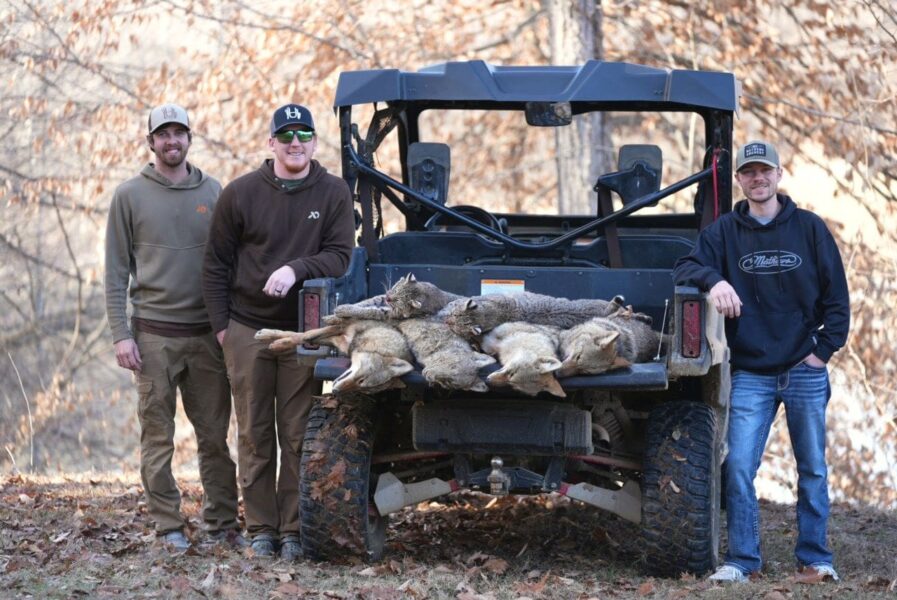After seeing his photos in a recent post on Instagram, I learned that my good friend and photographer Levi Rightnowar had spent a weekend in Kentucky predator hunting with some of his friends. A couple days after, while talking to Rightnowar, he raved over the fun and excitement he experienced while helping a landowner take a few predators from their land. During two nights of predator calling, Rightnowar and his friends managed to take four coyotes and three bobcats. Taking those predators may have saved the lives of multiple fawns that would have been born in the coming months. Plus, Rightnowar ignited a passion for predator hunting, saying that he was now ready to go again, once he returned home to southern Missouri. Two bobcats were taken during the day and the coyotes at night.
Managing predator populations is critical to maintaining a healthy and sustainable deer herd. Predators play a natural role in the ecosystem, but when their numbers become unbalanced, they can significantly impact deer populations, particularly fawns. Effective predator management requires a combination of hunting, trapping, and habitat modifications to ensure the best possible outcomes for your deer herd. Plus, it is a fun and exciting time to spend outdoors when other hunting seasons have expired and there isn’t much else to do outside.
Understanding the Impact of Predators on Deer Populations
Predators such as coyotes, bobcats, and, in some cases, black bears can significantly reduce the fawn population. Studies have shown that fawn survival rates can drop to low levels in areas with high predator densities, negatively affecting overall deer numbers. Adult deer can also fall victim to predation, particularly those weakened by harsh winters or disease.
While it’s essential to recognize predators’ role in the ecosystem, managing their numbers is crucial for maintaining a balanced and healthy deer herd. The key to effective predator control is employing a well-rounded strategy that incorporates trapping and hunting.
Trapping as a Predator Management Tool
Trapping is one of the most effective ways to control predator populations, particularly for species such as coyotes and bobcats. Because these predators are often nocturnal and elusive, trapping allows for consistent population control without requiring constant human presence.
For those wanting to start trapping as an effective management tool, one of the first things to learn is what types of trapsare available for use on coyotes and bobcats.One of the most common styles of traps is afoothold trap.These are commonly used for trapping coyotes and bobcats. When set correctly, they allow for humane capture and selective removal of problem animals.The second type of trap is asnare.A snare is commonly used along game trails and fence lines; snares are effective for targeting specific predators. However, they require proper setup and regular checking to ensure ethical trapping.For another humane trapping method, many trappers prefer alive cage trap. Although they do not work well for larger predators such as coyotes, these can effectively be used for bobcats and raccoons. They are instrumental in areas where non-target species might be present.

Best Practices for Trapping
Before trapping, there are a few things to know. Number one, Know Your Local Regulations. Many states have specific trapping seasons and regulations that must be followed. Once you know you are trapping legally, it is time to find the most effective areas before setting traps. Scout for Predator Sign by placing traps near den sites, game trails, or areas with high predator activity, which increases effectiveness. Use Proper Lures and Bait. Scent-based lures that mimic prey animals work the best and can increase trapping success overall. Your traps are correctly set; it is vital to Check Traps Daily. Regular trap checks ensure ethical practices and compliance with regulations; you never want to leave an animal in the trap too long to avoid the animal suffering or dying an unethical death.
Hunting as a Predator Management Method
Hunting is another effective tool for managing predator populations and is my favorite predator control method. Coyotes, bobcats, and other predatory species can be hunted using various methods to help keep their numbers in check. Calling predators is the most popular method of predator hunting and is often done by using electronic or mouth calls that mimic distressed prey sounds and can effectively lure predators into range. By creating sounds of actual coyotes and prey sounds, coyotes and bobcats can be called into close range, making it easier for hunters to use a rifle or shotgun to harvest the predator. Night hunting is also a great way to use a call and bring predators into shooting range. Since many predators are nocturnal, thermal or night vision optics can dramatically increase success rates, allowing hunters more shot opportunities. If you don’t have access or choose not to use a call, hunters can also use a spot and stalk hunting style. This method is particularly effective in open terrain where predators can be seen from a distance. Then, hunters can use a firearm to make an effective shot.

Developing an Effective Predator Management Plan
A strategic and well-rounded predator management plan ensures your efforts are sustainable and effective.
Key Components of a Predator Management Plan
- Monitor Predator Populations: Use trail cameras, track counts, and hunter observations to assess predator densities.
- Establish a Predator Control Schedule: Year-round management is necessary to keep predator numbers in check.
- Encourage Responsible Hunting and Trapping: Educate landowners, hunters, and trappers on the importance of predator control.
- Improve Deer Habitat: Creating thick cover for fawns and maintaining high-quality food sources can help reduce predation risk.
- Work with Neighbors: A coordinated effort across multiple properties increases the overall effectiveness of predator management.
- Evaluate and Adjust: Continually assess the effectiveness of your management efforts and adjust tactics as needed.
Effective predator management is essential for maintaining a healthy deer herd. You can ensure higher fawn survival rates and a more balanced ecosystem by incorporating trapping, hunting, and habitat improvements into your strategy. Whether you’re a landowner, hunter, or wildlife manager, taking an active role in predator control will benefit deer populations and overall wildlife conservation efforts.

